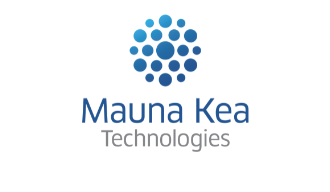Mauna Kea Technologies Reports New Evidence Highly Supportive of the Use of Cellvizio for Diagnosing Pancreatic Cysts Presented at DDW 2024
Pancreatic cancer remains difficult to diagnose accurately using conventional methods often leading to late-stage diagnoses or unnecessary surgeries
New publications confirm once more Cellvizio’s far superior ability to accurately classify the risk of pancreatic cystic lesions with 98% sensitivity and accuracy, surpassing conventional methods
Paris and Boston, June 13, 2024 – 5:45 p.m. CEST – Mauna Kea Technologies (Euronext Growth: ALMKT), inventor of Cellvizio®, the multidisciplinary probe and needle-based confocal laser endomicroscopy (p/nCLE) platform, today announces a new body of evidence supporting the use of Cellvizio® for the classification and risk stratification of pancreatic cystic lesions (PCLs), presented at the Digestive Disease Week® (DDW) 2024 Conference held in Washington, DC.
Conventional diagnostic testing of PCLs which involves performing an endoscopic ultrasound (EUS) and then collecting and testing the cyst fluid through fine needle aspiration (FNA) is considered as suboptimal at accurately diagnosing and risk stratifying PCLs. Cellvizio® can be added to EUS as an adjunct via the existing FNA needle (“EUS-nCLE”), providing real-time imaging of the cyst characteristics and aiding in appropriately gauging the potential risk posed by the cyst prior to any surgical intervention.
In one publication1 pooling two separate studies with a combined sample size of 420 patients, the sensitivity and diagnostic accuracy of EUS-nCLE for classifying mucinous vs. non-mucinous PCLs was 98% and 97%, respectively, compared to 74% and 81% for fluid analysis (CEA) + cytology, 77% and 80% for CEA + cytology + glucose, and 76% and 86% for next generation sequencing (NGS), respectively. This sharp positive increase in sensitivity and accuracy with Cellvizio (EUS-nCLE) would translate to a marked reduction in late-stage diagnoses of advanced pancreatic cancer and unnecessary surgeries on benign or low-grade lesions, totaling as many as 2,000 unnecessary surgeries per year in the United States2.
In a second publication3 evaluating data from 65 patients enrolled in a multi-year study, EUS-nCLE demonstrated high accuracy in preoperatively predicting dysplasia in branch duct intraductal papillary mucinous neoplasms (BD-IPMNs), with high interobserver agreement of 0.711.
A third publication4, using the same patient data, concluded that improved preoperative accuracy can be achieved by incorporating nCLE in the preoperative risk stratification of BD-IPMNs, improving the decision criteria for evaluating a patient’s candidacy for surgery, and ultimately improving patient management.
"The combination of these publications and presentations from DDW underscore, once again, the critical role Cellvizio can play as a key adjunct to the tools physicians use to diagnose and manage pancreatic cysts,” said Sacha Loiseau, Ph.D., Chairman and Chief Executive Officer of Mauna Kea Technologies. “Pancreatic cancer remains one of the more elusive cancers, often termed the ‘silent killer’ because of its lack of symptoms and discovery by incidental imaging. Obtaining an accurate diagnosis is critical to ensure only patients who need surgery receive it, and to ensure the correct risk stratification of malignant cysts. This new corpus of data confirms that there is no combination of techniques which is superior to direct microscopic observation of the pancreatic cystic lesion in real time with Cellvizio. We are confident that with all the confirmatory positive data and the growing support from many experts around the world, nCLE with Cellvizio is fast approaching its prime time and the status of standard of care, thus creating a very significant market opportunity for Mauna Kea.
About Pancreatic Cysts
The prevalence of pancreatic cystic lesions in the adult asymptomatic population ranges from 2.4% to 24.3%5. With the large majority of pancreatic cystic lesions being discovered through incidental imaging and an estimated 40% of surgeries being performed unnecessarily on benign or low-grade dysplasia lesion patients, there is a need for more accurate classification methods, including risk stratification, earlier in the patient’s diagnostic workup. Conventional diagnostic testing involves performing an endoscopic ultrasound (EUS) and then collecting and testing the cyst fluid through fine needle aspiration (FNA). In some advanced facilities, next generation sequencing (NGS) may be performed to provide additional data. The gold standard remains resection of suspicious tissue, often introducing complications such as chronic pancreatitis, even if the cyst is benign. Although most facilities employ a combination of a range of conventional diagnostic methods, sensitivity, specificity, and accuracy remain critically low, potentially exposing patients to unneeded surgical procedures.

